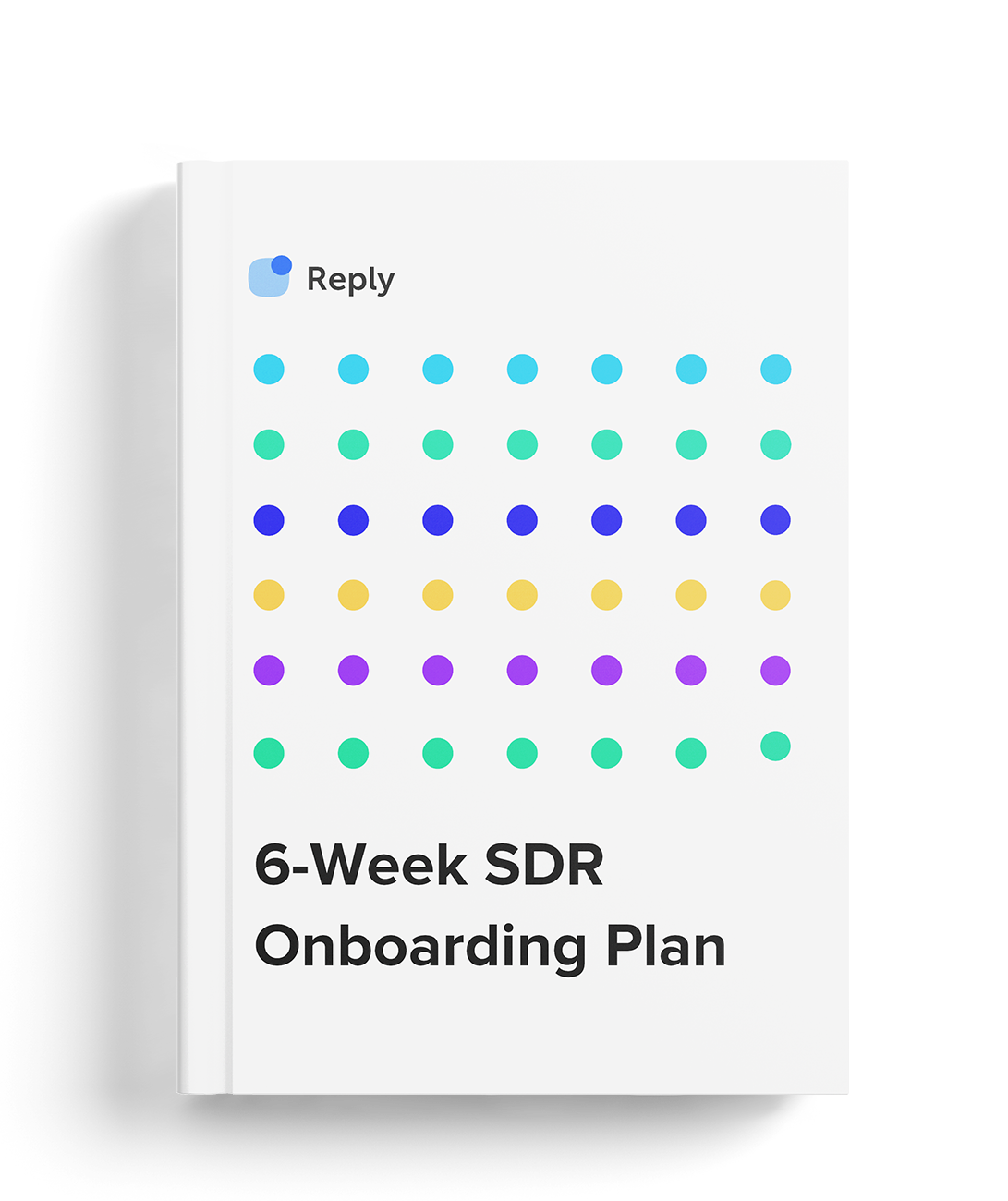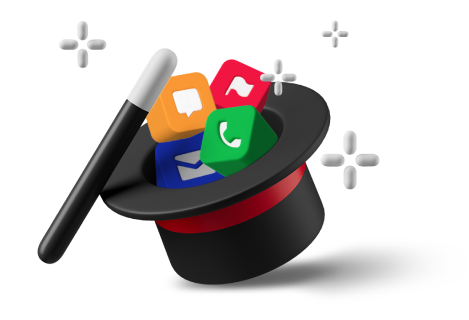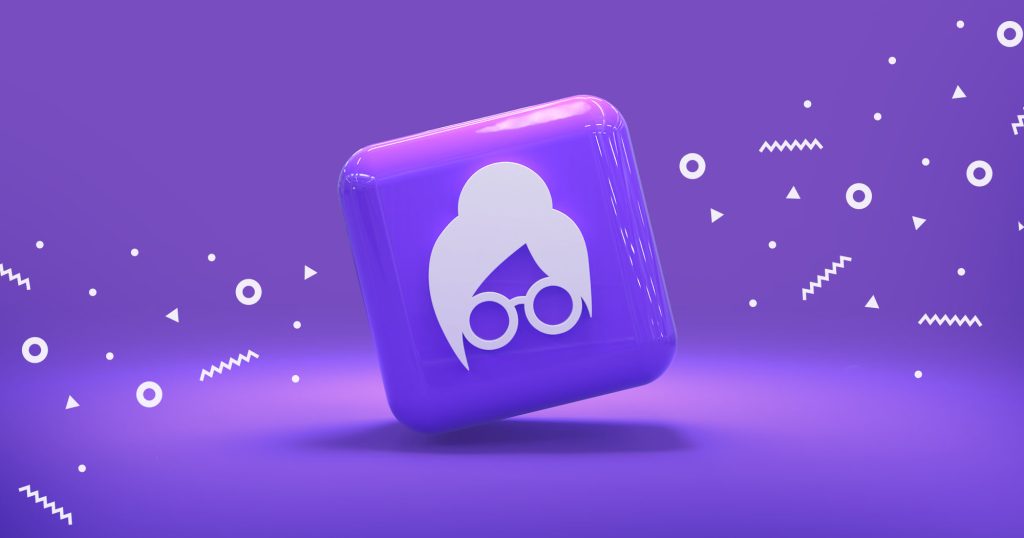Back when I started my career as an SDR, no one bothered to explain what my role actually was. I was told to find potential users for our product — without any clear ICP, best practices, playbooks, or templates.
As a result, it took me around a year (and a great deal of trial and error) to figure it all out on my own. That’s why, as an SDR leader, I always offer as much support and resources as possible to help our new hires with smooth and quick onboarding.
Last year, we added 5 new SDRs to our team at Reply using our own onboarding process we created and polished along the way. And I would like to share some of our best practices (plus a detailed action plan) with you, fellow SDR leaders. So, let’s dive right in.
Why is onboarding so important in sales development?
In the world of sales, the role of an SDR is often considered an entry-level position. As a result, most newbie sales reps have little to no experience and understanding of sales in general. They require professional training and continuous coaching to achieve the hoped-for results.
According to The Bridge Group Report, the average SDR ramp-up time is 3.1 months. The average tenure, on the other hand, is just 1.8 years. This means your SDRs will only have around a year and a half to perform at their best.
You might be wondering: What’s the point in spending so much time and effort on your employee ramp up? Wouldn’t it be better to cut the onboarding and try to get the most out of your new hire before they decide to leave?
That is a common — but very dangerous — fallacy.
First of all, you should consider employee training an investment with guaranteed ROI. A well-trained SDR who has all the necessary tools and resources at hand can easily outperform any other sales rep.
Proper onboarding can also significantly reduce the overall ramp-up time. As a result, your SDRs will become productive and reach the quota faster.
On top of that, your hires will also be more likely to stay with you longer if you help them improve and foster their professional growth. The same Bridge Group Report finds that proper training and development offered by the employer will keep 86% of millennials from leaving their current position.
Another common mistake is to think that onboarding is only required when hiring inexperienced SDRs. Even if you’re not new to sales development, every business is different, with its specific ICPs, sales processes, tools, and preferred tactics.
Sure, the amount of time and training involved will be significantly different. But you will still have to familiarize your new hires with the product and target audience as well as break down the nuances of the existing processes and tools.
Key elements of a successful SDR onboarding process
Whether it’s a one-week crash course or a 3-month “advanced SDR studies” program, there are certain things that define a successful onboarding process. Here are some of the most important aspects of an effective SDR ramp-up.
Structure
An effective process is always well-planned and documented. Sure, you can adjust some details if needed, but the core should always remain intact. Having this solid foundation can help you build a consistent and scalable process for every one of your new team members. This will also be useful if there are other people involved in the process.
Feedback
Regular check-ins with your new hires are nonnegotiable. This is how you stay on the same page and keep track of the progress. Feedback, on the other hand, is often overlooked, especially if it’s the employee’s feedback concerning your process. When onboarding your SDRs, give AND ask for honest feedback regularly and act upon it as you move forward.
Mentorship
Telling the new hires what to do and how to do it is a losing tactic. A better approach would be to offer ongoing sales coaching while also offering some freedom to try and figure things out on their own. In this case, consider assigning peer mentors to coach the new hires to avoid their feeling pressured by senior management.
Resources
Personal guidance is important, but so is self-education. Give your SDRs some sort of knowledge base to refer to when they have questions or want to revisit the things you’ve covered during your coaching sessions. You can as well include some collateral reading resources for those who want to dig deeper. In this case, also make sure to give your employees enough time to do that.
Practice
You can coach your new hires on how to find and dial a prospect. You can even provide a ready-to-use script and have them memorize it verbatim. Yet, picking up a phone and talking to a real human is quite a different story. Let your SDRs apply their knowledge and sharpen their skills in practice early on. Sure, they will make mistakes. But it’s only practice that makes perfect, right?
Is remote onboarding any different?
Technology has enabled us to effectively collaborate, work, and learn, all while staying miles away from each other. Yet, onboarding typically requires closer contact between the SDRs and their mentors. It also might pose some extra challenges for you.
But there are a few things to make your remote onboarding as effective as in-person training:
- Use video calls as much as possible. A quick text chat might seem more time-efficient, but it won’t give you an idea of how your trainee feels.
- Have an extensive shared knowledge base always available to everyone so your SDRs can first try to find the answers on their own rather than asking for your help.
- Invest in sales training tools, at least for things like call shadowing and conversation recordings.
- Set measurable milestones and realistic goals to keep track of the employee’s progress at each step.
But most importantly, don’t try to micromanage your new hires. Allow them some space to get creative and show initiative. Being able to work autonomously without close supervision is a must for remote workspaces.
Moreover, if you have to ask or remind your new hire to do basic stuff once, it’s a bad sign. If you have to do that again, you’re probably wasting each other’s time.
Remote vs. in-person SDR onboarding: what’s the difference?
Alright, let’s break it down. Remote vs. in-person sales onboarding plan—it’s like the difference between watching a concert on a livestream and being in the crowd.
Both can be epic, but the experience? Totally different vibes—here is the table to prove it:
| Aspect | In-person onboarding | Remote onboarding |
| Interaction | Instant feedback, casual chats by the coffee machine | Scheduled check-ins, Slack messages, and Zoom calls |
| Learning style | Over-the-shoulder coaching, team energy | Self-paced videos, live Zoom sessions, task-based learning |
| Connection building | Team lunches, desk-side chats | Virtual happy hours, buddy systems |
| Flexibility | Less flexible—location and schedule-bound | Learn-anywhere-anytime freedom |
| Costs | Travel, lodging, office space | Tech tools, software subscriptions |
| Challenges | Logistics-heavy, depends on shadowing | Risk of isolation, harder to recreate organic moments |
| Best use case | Ideal for bonding, fast feedback, and hands-on training | Perfect for remote teams or globally dispersed SDRs |
And let’s see in details.
The in-person magic
When you onboard SDRs in person, you’ve got the power of proximity on your side.
Picture this: a new hire sitting next to a seasoned pro, overhearing their calls, picking up on subtle cues, and immediately asking, “Why’d you say that?” It’s instant feedback central.
Plus, you can gather the whole squad in a room, role-play some cold calls, and let the collective energy do its thing. And let’s not forget the impromptu coffee chats that build camaraderie.
The downside?
It’s logistically heavier. Not everyone can pack up and move for a job or show up to HQ for weeks. Also, in-person onboarding can sometimes over-rely on shadowing, which isn’t always the most structured approach.
The remote playbook
On the flip side, remote onboarding is like running SDR bootcamp in the cloud. With the right tools (and SDR onboarding checklist), you can design a structured, repeatable experience: think self-paced video modules, interactive Zoom training, and CRMs filled with bite-sized tasks to tackle.
The big win here? Flexibility. Your new hire in Austin can learn at their pace, while your SDR in Berlin starts their day at a reasonable hour.
The challenge, though, is keeping the personal connection alive.
It’s easy to feel like an SDR on a digital island, especially if your Slack messages don’t always get immediate responses. And yes, recreating those organic “overhearing a call” moments?
Tough, but not impossible. (Pro tip: Record real-life sales calls and build a library of “greatest hits” for your team to learn from.)
Bridging the gap
Here’s the truth: the best SDR and BDR onboarding plan often mixes both worlds. If you can swing it, a hybrid approach works wonders. Maybe you fly your new SDRs in for a week of in-person bonding and foundational training, then transition them to remote learning.
Or, if fully remote is your jam, amp up the connection factor. Schedule weekly 1:1s, organize virtual happy hours, and set up a buddy system to give new hires a go-to person for quick questions.
At the end of the day, the real difference between remote and in-person onboarding is the medium, not the mission. The goal is the same: give your SDRs the tools, confidence, and support they need to crush their targets—and maybe even have fun while they’re at it.
Whether it’s over a conference room table or a Zoom call, effective onboarding is all about making them feel ready to rock.








![New in 2025: Reply.io Teams Up with Persana AI [+Live Webinar] New in 2025: Reply.io Teams Up with Persana AI [+Live Webinar]](https://reply.io/wp-content/uploads/persana.io_-1024x538.jpg)
